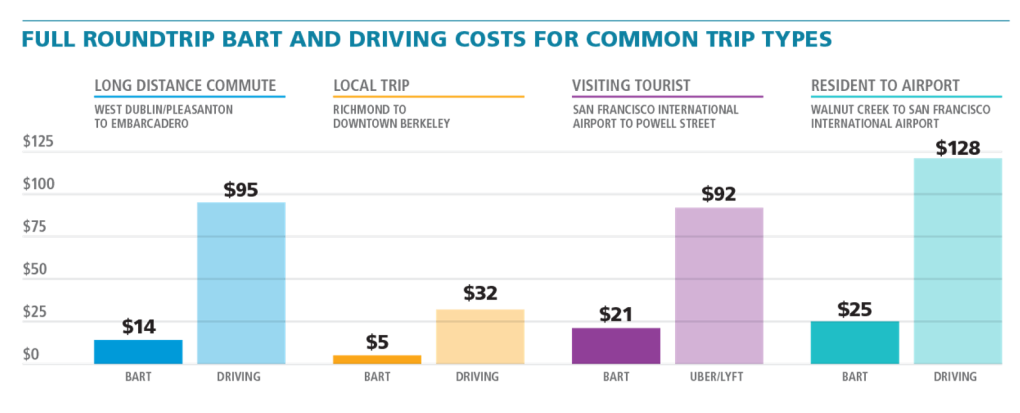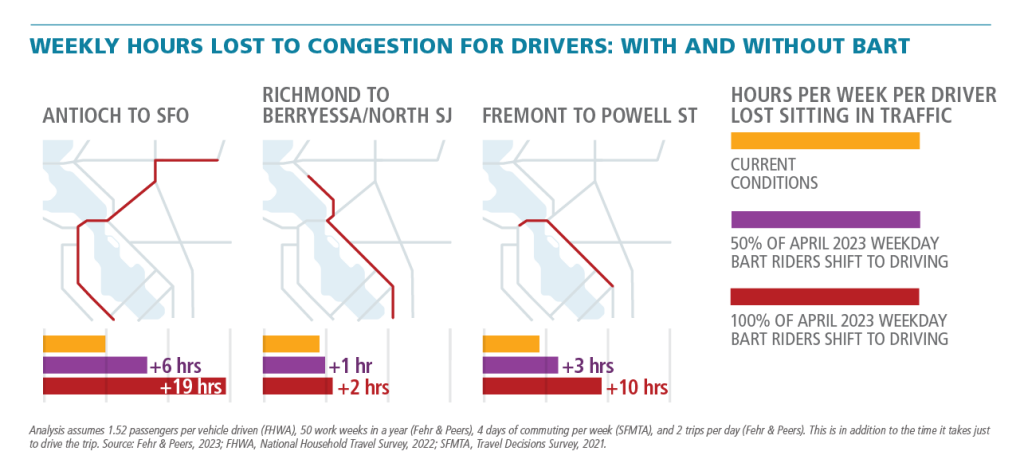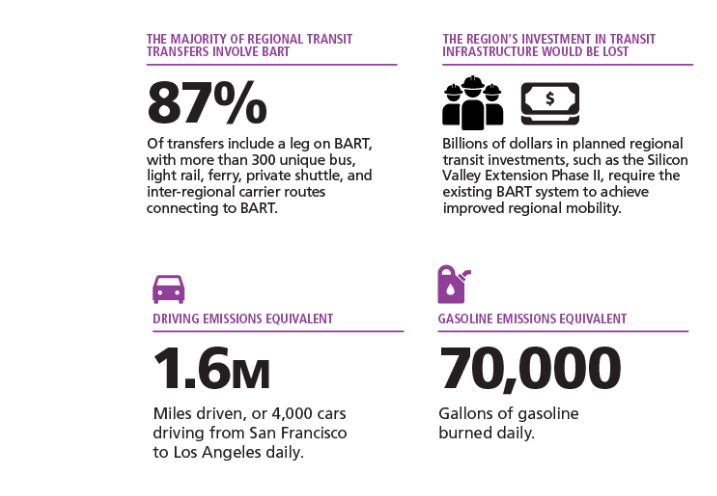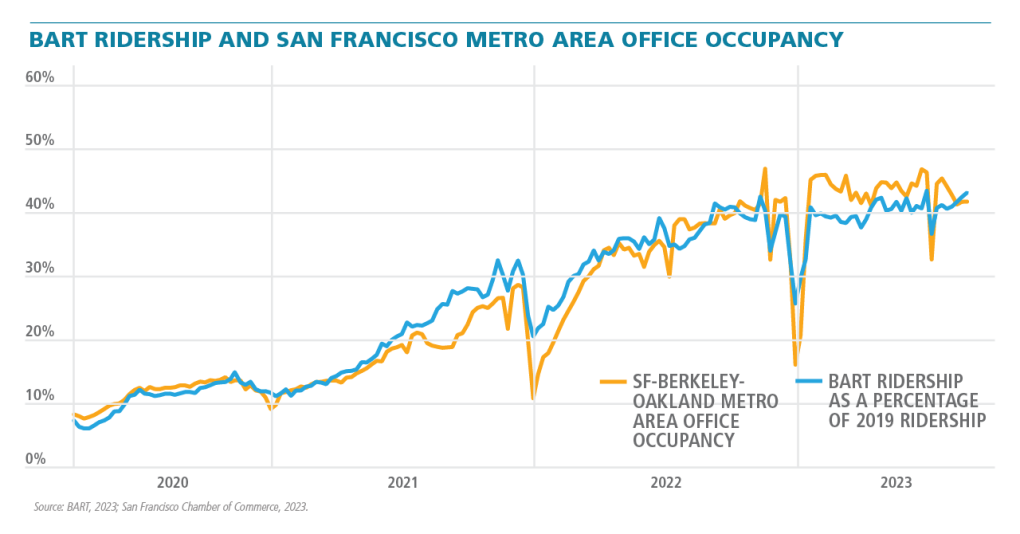Search Results
Take BART to Oakland Pride Sat. 8/31
Join BART this Sunday, August 31, for Oakland Pride parade and festival. The parade begins at 10:30 am at 14th and Broadway and ends at Broadway and 20th. The festival opens at 11 am. Look for the BART booth and BARTmobile. We'll have extra personnel at our downtown Oakland stations and the first trains on
BART Board meeting rescheduled for 1pm due to PG&E power outage that impacted BART HQ
Due to the PG&E power outage in Downtown Oakland on Thursday, May 8, which impacted BART Headquarters, today's Board meeting was rescheduled for 1pm. The building's power is restored.
The Board meeting start time is rescheduled for 1 pm.
Livestream Board meetings will begin with the Call to Order, which may not begin as scheduled.
To watch the meeting livestream, visit this link.
Take BART to Oakland's Art Murmur on Friday, August 6
Photo by greenkozi By Xuan Lam BART Website Intern Art Murmur, a monthly showcase of local artists’ work, is one of many cultural events helping to give Oakland a new reputation for urban sophistication. Art Murmur takes place every first Friday of the month (for full schedule visit www.oaklandartmurmur.com)
BART schedule change begins February 10, 2020
BART will adjust train schedules on February 10, 2020 to improve service. The new schedule impacts all lines to some degree, especially first and last trips of the day. Some lines will see service start earlier and some will start a little later. Most changes are small tweaks and will adjust departures and
BART year to date crime stats through June
Click here to view year-to-date crime stats through June 2018. Overall crime at BART has remained flat this year with 1662 Part 1 crimes year-to-date in 2017 and now at 1,659 year-to-date in 2018. BART Police has been making steady progress with its officer recruitment campaign. Under Chief Rojas, our officer
Podcast: Go inside BART's version of mission control
In this latest edition of our podcast series “Hidden Tracks: Stories from BART” we take you behind the scenes of the Operations Control Center. The OCC is the nerve center of the BART system. This is where a dedicated team of problem solvers oversees BART’s critical infrastructure as well as all of the trains
Recent measles exposure on BART; risk of infection low
Some BART riders may have been exposed to measles last week after a San Mateo County resident with measles commuted from Millbrae station to Civic Center station while infectious. The risk of contracting measles via BART is negligible, though Bay Area residents should be aware of the situation. San Mateo
Officer training exercises at Millbrae BART Station May 3 and 6
From 10 am to 3 pm on Tuesday, May 3, and Friday, May 6, BART Police will assist the San Mateo County Sheriff’s Department with training exercises at Millbrae Station. SamTrans is providing a bus for the exercises that will be parked in the surface parking lot. BART will have a train parked at the out-of
BART cosponsors Oakland Lunar New Year celebration
BART is teaming up with the County of Alameda, the Asian Community Collaborative and the Oakland Asian Cultural Center to cosponsor the annual Lunar New Year Celebration in Oakland. This year’s festivities will be held Thursday, February 19, from 11:45 a.m. to 1:30 p.m. at the Oakland Asian Cultural Center
BART’s “Role in the Region” detailed in new report that describes the benefits of BART and the devastating impacts of a Bay Area without it
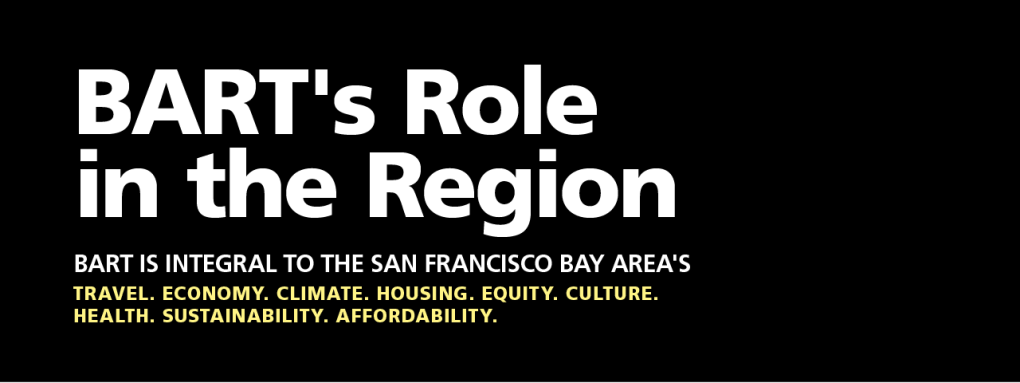
A new report released today paints a bleak picture of a Bay Area without BART while highlighting the benefits of the transit system to the region with a wide range of metrics.
Click here to view a pdf of the report and visit the project webpage at bart.gov/roleintheregion.
BART's Role in the Region Report aims to inform a regional conversation about the future of BART by describing its contributions to the Bay Area. It also provides predictions for how the Bay Area – its economic viability, traffic-choked roadways, cultural institutions, and more – will look without BART.
“The Bay Area and our regional transportation network have undergone significant changes since BART last conducted a Role in the Region study in 2016," said BART General Manager Bob Powers. “The 2024 Role in the Region Report arrives at a crucial crossroads for BART and the region, and the data, analyses, and stories within will serve as an important educational resource for the pivotal years ahead.”
In the report, you will find insights into key topics, including changes in travel patterns and funding; BART’s holistic benefits to the Bay Area; and BART’s future.
Below is a snapshot of some of the report’s findings:
BART’s benefits:
- BART is significantly more affordable than driving (Fig. 1 in slideshow). Example: Taking BART from West Dublin/Pleasanton Station to Embarcadero Station roundtrip costs $14. Driving the same route costs $95 when accounting for gas, tolls, parking, insurance, and maintenance.
- BART is integral to a connected regional transit network. Within a 15-minute walk of BART and one transfer to a connecting agency transit stop, you can reach 67% of the 9-county Bay Area region’s jobs, 61% of the region’s residents, and 60% of schools, parks, and libraries.
- In 2023, BART contributed $1.2 billion to the economy through more than 5,000 jobs when accounting for BART’s direct payroll expenditures, local vendor spending, and employee expenditures. Between 2019 and 2023, BART infused the local economy with more than $3.7 billion in construction spending and $1.7 billion in construction labor income.
If BART did not exist:
- Regional traffic congestion would worsen. Example: Drivers could experience up to an additional 19 hours lost to congestion weekly (Fig. 2).
- Traffic could increase by 73% on the Bay Bridge and 22% in the Caldecott Tunnel during morning peak commute hours.
- The regional transit network would fail to function, and there would be cascading effects across the 300 bus, light rail, ferry, private shuttle, and inter-regional routes that connect to BART (Fig. 3).
Changing regional travel trends:
- BART ridership is closely linked to regional office occupancy rates; both have recovered to ~43% of pre-pandemic levels (Fig. 4).
- Because of BART’s decreased farebox recovery, BART expects a budget deficit beginning in 2026 when state and federal emergency assistance runs out.
